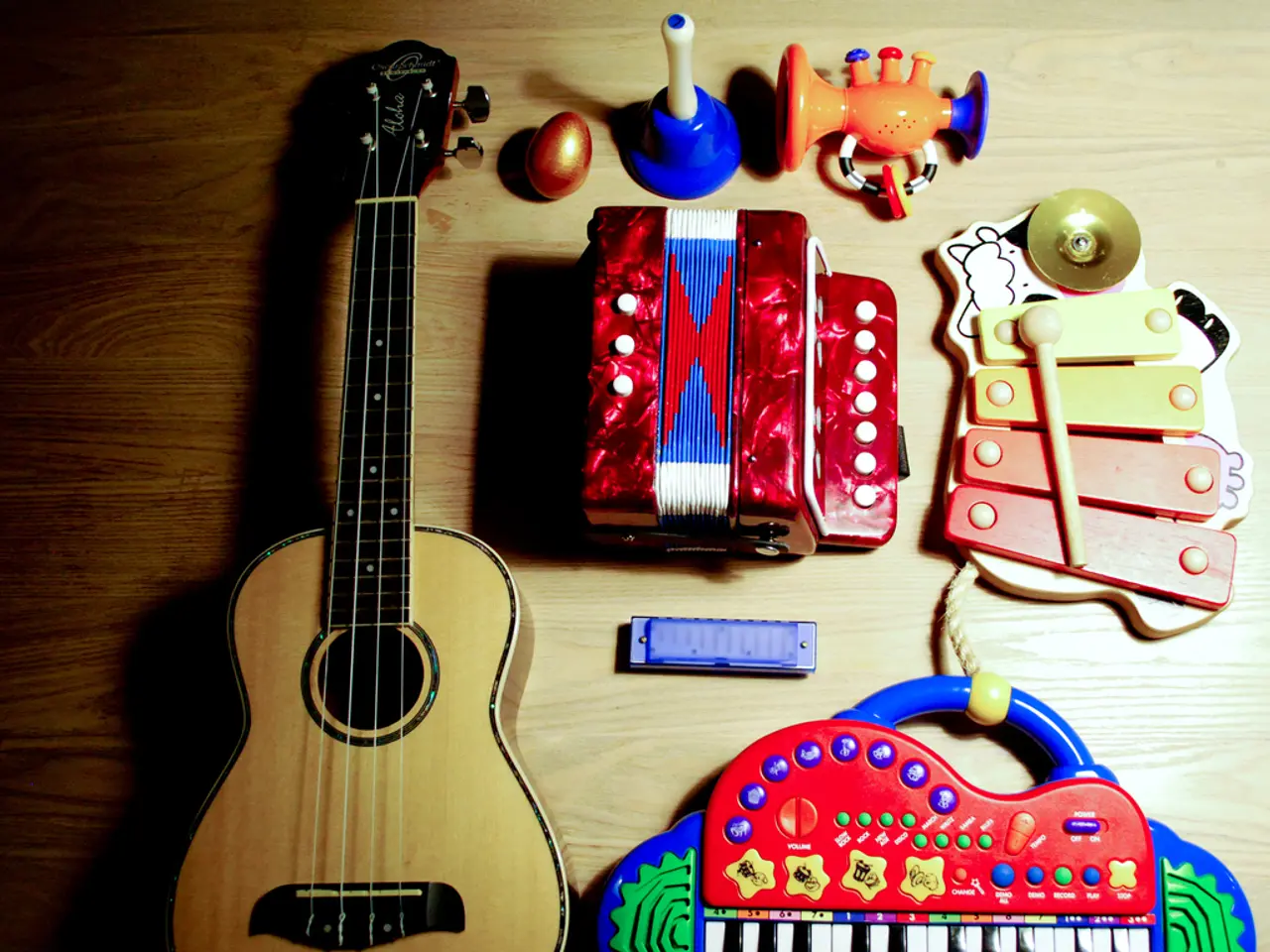Enhancing Music Creativity via Practical Theory Tasks Encouraging Imagination Expansion
In the realm of contemporary music, the ancient art of counterpoint has found a new lease of life. This centuries-old technique, which involves combining independent melodic lines, is proving to be a valuable asset for musicians navigating the complexities of modern music production.
Counterpoint is particularly useful in creating richness in layered, evolving pieces like film scores, ambient music, pop, and electronic music. It can be seen as a way of listening, promoting a deeper understanding of musical relationships and interactions. Writing with restraint is a skill learned through counterpoint, knowing that a quiet inner voice can be just as powerful as the lead line.
Musicians trained in counterpoint learn to hear more deeply, not just the melody on top, but what moves underneath. This ability is crucial in digital composition and interactive media that rely on layered sound design and real-time responsiveness. Music theory offers a means to create contrast using dynamics, spacing, or chord substitutions, further developing musicians' ability to create complex, engaging textures systematically.
The use of music theory and counterpoint is not about going backward but rather a way for contemporary musicians to regain control and navigate the complexities of modern music creation. Theory and counterpoint become part of a musician's hearing and decision-making process, transforming chords into moods, questions, and answers, and lines into dialogue.
Music theory enables musicians to communicate more effectively with others through a shared vocabulary. It provides insight into why some risks in composition work and others do not, due to the importance of context. Counterpoint exercises can boost creativity by encouraging the exploration of multiple melodic lines and the development of intricate musical textures.
Applying formal techniques like music theory and counterpoint can support better screen time management for artists, helping to build longer, more intentional sessions and avoid creative fatigue in tech-heavy environments. Counterpoint helps musicians control density and motion by choosing when voices move together or apart, aiding in the creation of balanced, engaging compositions.
Trained composers learn how to develop ideas, not just capture them, which is useful in today's fast-paced music landscape. Balancing freedom and structure is a key aspect of counterpoint, allowing each voice to breathe within a shared direction. Music theory provides a systematic understanding of harmony, tension, and resolution, enhancing intentionality in musical composition.
In essence, music theory and counterpoint act as cognitive tools that underpin creative decision-making, streamline digital workflow, and promote disciplined screen time management for musicians working in technologically intensive contexts. They nurture a more intentional and manageable creative process amid the challenges of working in digital and interactive musical spaces.
Each voice in counterpoint has its own logic, but they should support each other when written well. This harmony, both in theory and practice, is the key to creating engaging, layered music that resonates with audiences in today's digital age.
Composers applying music theory and counterpoint techniques can craft complex, engaging music in various genres, such as film scores, pop, ambient, and electronic music, by creating rich layers and promoting a deeper understanding of musical relationships. Music theory offers musicians the means to unify voices systematically, enhancing the creation of balanced compositions with contrast and intention.








